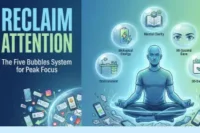The Ultimate Guide to a Digital Detox: Your 7-Day Journey to Mental Clarity & Balanced Living
Published: 15/07/2025
In today’s world, it often feels impossible to escape the constant pull of our screens. The pings of notifications, the endless scrolling through social media feeds, the pressure to stay connected, and the nagging feeling that you’re always “on” have become an unrelenting background noise in our lives. We find ourselves lost in a never-ending cycle of distractions, only to look up hours later, exhausted, mentally foggy, and questioning where the day went.
This constant barrage of information and virtual connectivity leaves us feeling drained, stressed, and disconnected from the present moment. Sound familiar? You’re not alone.
In fact, recent studies show that the average adult spends over 6 hours a day on screens, with many of those hours consumed by social media, emails, and mindless scrolling. This amount of screen time isn’t just affecting our productivity—it’s taking a toll on our mental and physical well-being. Research from 2024 shows that 68% of adults report feeling mentally fatigued from their screen usage, leading to increased levels of anxiety, reduced focus, and poor sleep quality.
A digital detox is more than just putting down your phone for a few hours. It’s a mindful, intentional disconnection from technology to regain balance in your life. It’s not about complete abstinence from all things digital—because, let’s face it, technology is integral to modern life. Instead, it’s about creating healthy boundaries and rediscovering the power of being present in your surroundings. It’s about re-establishing control over your tech habits so that you can focus on what truly matters: your mental clarity, relationships, and well-being.
Think of it as a journey—not a destination. A journey back to yourself, where you reconnect with the world around you, recharge your mind, and develop a healthier relationship with the screens that often rule your life.
The Promise of This Guide :
This isn’t just another article with generic advice. This is your complete roadmap for a transformative 7-day digital detox journey. By the end of this guide, you will experience:
- Mental Clarity: Say goodbye to brain fog and regain your focus.
- Reduced Stress: Lower your anxiety and feel more in control of your day.
- Improved Sleep: Experience deeper, more restful sleep free from screen distractions.
- Rekindled Passions: Rediscover the hobbies and interests you’ve been neglecting.
- Deeper Connections: Reconnect with loved ones without the interruptions of digital distractions.
- Balanced Living: Embrace a life where you control technology—rather than letting it control you.
This guide is not just about surviving a digital detox for 7 days; it’s about setting the stage for a lasting transformation in how you interact with technology long after the detox ends.
Why This Guide is “Ultimate”:
What makes this guide different from the others? It’s not just a set of vague tips; this is a step-by-step action plan that takes you through each day of your 7-day journey. You’ll have clear, actionable steps to follow, along with insights grounded in recent research, all designed to help you sustain the positive changes you make. From day one to day seven, this guide is designed to help you build lasting habits, so that the clarity, peace, and balance you find during this detox can carry on long after the journey ends.
The Silent Epidemic: Why Digital Detox is No Longer Optional
We live in an age of constant connectivity, where it seems we’re always online—whether we’re checking social media, answering emails, or scrolling through the latest news. While technology has certainly enhanced our lives in many ways, it has also come with a hidden cost to our mental, emotional, and physical well-being. The effects of excessive screen time are not just an inconvenience—they are increasingly being linked to serious health issues.
Mental & Emotional Health
- Anxiety, Stress, and Depression: The digital world, especially social media, often presents a highlight reel of other people’s lives, leading to an unhealthy cycle of comparison and FOMO (Fear of Missing Out). A study published in 2024 revealed that individuals who spend more than 4 hours a day on social media platforms are 30% more likely to experience increased levels of anxiety and depression compared to those who limit their usage. This effect is largely due to the tendency to compare ourselves to others, especially when we see curated images of seemingly perfect lives. FOMO exacerbates feelings of inadequacy, isolation, and stress.
- Cognitive Decline: Prolonged screen time has been shown to reduce attention span, impair critical thinking, and contribute to memory issues. Research from 2025 indicates that frequent exposure to digital distractions can lead to decision fatigue, where we struggle to make even simple decisions due to the constant bombardment of information. The brain’s ability to process and retain information is compromised, leading to mental exhaustion. Studies have also noted that digital multitasking—attempting to juggle multiple online tasks simultaneously—impairs memory and decreases focus, leaving us less efficient and more mentally drained.
- Emotional Regulation: Excessive screen time, particularly the constant flow of notifications and information, can hinder our ability to regulate emotions. A 2024 study found that individuals with high screen time were more likely to report increased irritability and emotional instability. With the constant influx of messages, updates, and alerts, it becomes increasingly difficult to focus on the present moment, leading to heightened stress and emotional exhaustion.
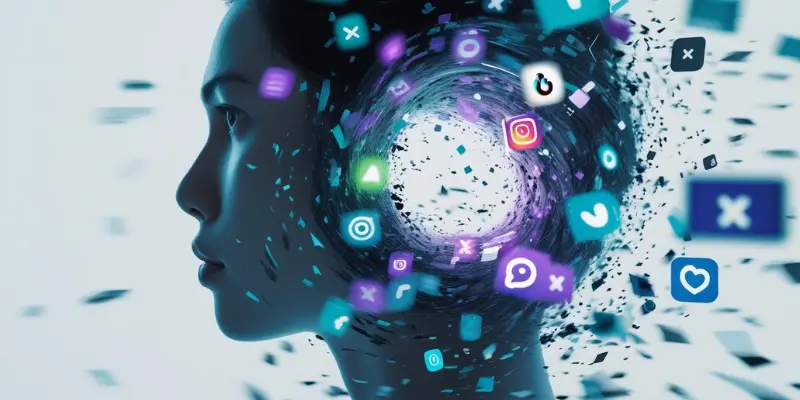
Physical Health
- Sleep Disruption: One of the most direct consequences of too much screen time is its negative impact on sleep. The blue light emitted from devices suppresses melatonin, the hormone responsible for regulating our sleep cycle. Studies in 2024 indicate that individuals who use screens late at night take longer to fall asleep and experience lower-quality sleep. This is due to the disruption of the circadian rhythm, which governs our natural sleep-wake cycle. The result? A restless night and a fatigued, unproductive day ahead.
- Physical Ailments: The physical toll of screen overuse is equally concerning. From digital eye strain (causing headaches, dry eyes, and blurred vision) to tech neck (resulting from long hours of hunching over screens), our bodies are paying a price for our constant connection. In fact, a 2024 report found that nearly 60% of adults experience some form of digital eye strain, and almost half report neck pain due to prolonged screen usage. These physical ailments are not only uncomfortable but can also lead to long-term health complications if left unaddressed.
- Stress Physiology: Constant screen time can also affect our stress physiology. Every time we check our phones, emails, or social media, our cortisol levels (the hormone related to stress) spike, activating the body’s fight-or-flight response. A 2025 study found that individuals who frequently checked their phones had consistently higher cortisol levels, which can contribute to chronic stress, fatigue, and burnout over time.
Erosion of Relationships & Real-World Connection
- “Phubbing” and Superficial Connections: In our digital age, it’s common for people to be physically present but mentally elsewhere, glued to their devices. This phenomenon, known as “phubbing” (phone snubbing), is taking a toll on our personal relationships. Instead of engaging in meaningful, face-to-face conversations, we often retreat to our phones, leading to feelings of loneliness and a lack of real connection. Studies show that over 40% of individuals report feeling ignored or undervalued when their partner or friend prioritizes their phone over them during conversations.
- Superficial Online Bonds vs. Genuine Intimacy: While social media platforms allow us to connect with a broad range of people, these connections are often superficial and lack the depth of real-world interactions. Many online relationships are based on curated versions of people’s lives, leaving us feeling more isolated and disconnected from the people around us. Genuine intimacy and emotional fulfillment often take a back seat when digital interactions dominate our lives.
Productivity & Creativity Drain
- The Multitasking Myth: It’s a common belief that multitasking improves productivity, but modern research reveals the opposite. Constant task-switching between apps, emails, and notifications not only reduces our productivity but also stifles creativity. A 2025 study showed that individuals who regularly switch between digital tasks experience a 10% decrease in productivity, as their brain struggles to refocus with each new distraction. The cumulative effect? A reduction in the quality of work and a decrease in creative output.
- Constant Interruptions: One of the biggest productivity killers in the digital age is the constant interruption. With push notifications, emails, and instant messaging, it’s nearly impossible to focus for long periods of time. Research has shown that it takes an average of 23 minutes to regain full focus after an interruption. As a result, our ability to engage in deep work and produce high-quality content or solutions is significantly impaired.

The Global Awakening: The Digital Wellness Movement
As our dependency on technology has reached unprecedented levels, there’s been a growing global awakening to the need for balance. The rise of the digital wellness movement is a direct response to the pervasive nature of screen time and its negative effects on our lives. More and more people are recognizing the need to “unplug”—not permanently, but consciously—by setting boundaries around their digital usage.
Tech companies, health organizations, and wellness experts alike are encouraging us to rethink our relationship with technology. This movement emphasizes intentional tech use, where we choose how and when to engage with digital tools, rather than being passive consumers of constant information. There’s a surge in interest around digital detox programs, mindful social media consumption, and even wellness retreats that focus on disconnecting from the digital world for a short time.
With growing awareness of the mental, emotional, and physical toll that constant connectivity takes, many are beginning to see digital wellness as an essential component of overall well-being. It’s no longer about completely abandoning technology—it’s about creating a healthier balance, where tech serves us, rather than the other way around.
Reclaiming Your Best Self: The Profound Benefits Awaiting You
After just a few days of intentional disconnection from screens, the positive effects begin to unfold. This journey is not just about limiting screen time—it’s about reclaiming your best self. When you step back from the constant digital noise, you’ll find that you’re not only physically recharged but also mentally, emotionally, and relationally transformed. Here are the profound benefits you can expect to experience.
Enhanced Mental & Emotional Well-being
The power of a digital detox goes far beyond just a temporary break from technology. It has the potential to sharpen your focus, reduce stress, and boost creativity, allowing you to reconnect with the world in a more meaningful way.
- Sharpens Focus & Concentration: When you’re not constantly interrupted by notifications or tempted to check your phone, you’ll find it easier to engage in deep work. This is the kind of focused, uninterrupted time that allows for productive thinking, meaningful progress, and the achievement of your goals. Studies from 2024 have shown that reducing screen time can significantly improve cognitive function and enhance your ability to concentrate on important tasks without distractions.
- Significant Stress & Anxiety Reduction: Constant exposure to screens, especially social media, triggers the release of cortisol (the stress hormone) and increases feelings of anxiety. However, by cutting back on your screen time, you’ll experience a sense of calm and mental clarity. In fact, a 2024 study found that participants who spent a week on a digital detox reported 30% lower levels of anxiety and 25% less stress compared to their pre-detox states. Reducing your digital consumption gives you the space to breathe and regain control over your emotional well-being.
- Boosted Creativity & Innovation: When you disconnect from the constant stream of digital content, your mind is free to wander and explore new ideas. This space allows creativity to flourish. Without digital distractions, you’re more likely to find new solutions to old problems and come up with innovative ideas. Studies show that creative thinking is significantly enhanced when you’re not tethered to technology, as your mind can make unique connections when given time and space to think.
- Increased Mindfulness & Presence: A digital detox helps you embrace the present moment. You become more attuned to your surroundings, experiencing the world as it is, rather than through the lens of a screen. Whether it’s noticing the beauty of nature, feeling more connected to the people around you, or simply appreciating the quiet, you’ll cultivate a deeper sense of mindfulness. A 2025 study found that practicing mindfulness, particularly by reducing screen time, helps individuals achieve a greater sense of well-being and life satisfaction.
- Improved Self-Awareness: By stepping away from the constant noise of the digital world, you give yourself the opportunity to reflect on your own thoughts and emotions. You’ll gain a clearer understanding of your personal needs, emotional triggers, and desires, which can lead to improved decision-making and healthier habits. Regular digital detoxing has been shown to enhance self-reflection and emotional intelligence, helping you navigate life with greater self-awareness and emotional resilience.

Physical Revitalization
It’s not just your mind that will benefit from a digital detox—your body will feel the positive effects too. Here’s how:
- Dramatically Improved Sleep Quality: One of the most immediate physical benefits of reducing screen time is better sleep quality. The blue light emitted by screens, especially before bedtime, has been shown to suppress melatonin, the hormone that regulates sleep. As you cut back on screen usage, particularly in the evening, your body’s natural rhythms are restored, leading to more restorative sleep. Research from 2024 suggests that individuals who reduce their screen time for just one week can experience up to 40% improvement in sleep quality.
- Reduced Physical Discomfort: Prolonged screen time can result in digital eye strain, headaches, and neck pain—conditions that many people experience daily due to excessive screen use. By taking time away from screens, you allow your eyes and neck to rest, significantly reducing the discomfort associated with tech neck and digital eye strain. Many detoxers report feeling less fatigued and experiencing fewer headaches after just a few days of disconnecting from technology.
- Greater Energy Levels & Motivation for Physical Activity: With reduced screen time, your body experiences less strain and fatigue, leaving you with more energy throughout the day. This increased vitality can boost your desire to engage in physical activities such as walking, exercising, or even just spending more time outdoors. As your body becomes more attuned to its natural rhythms, you may find that your motivation for physical activity increases, leading to improved overall health.
Deeper Connections & Richer Life Experiences
A digital detox doesn’t just revitalize your mind and body—it helps you build stronger relationships and rediscover the beauty of life’s simple pleasures. Here’s how:
- Stronger Real-World Relationships: One of the most significant benefits of reducing screen time is the opportunity to cultivate deeper, more meaningful relationships. When we stop phubbing (phone snubbing) and make a conscious effort to connect with those around us, we foster more authentic and present interactions. Without the distractions of technology, conversations become more focused, emotions are more genuine, and relationships are more fulfilling. A study from 2024 found that couples who spent less time on screens experienced a 20% improvement in relationship satisfaction, largely due to more time spent engaging face-to-face.
- Rediscovering Hobbies & Passions: With all the extra time and mental clarity you gain during a digital detox, you’ll have the freedom to rediscover old hobbies or explore new ones. Whether it’s painting, cooking, playing an instrument, or reading, engaging in offline activities not only brings joy but also gives your mind a refreshing break from the constant digital noise. By focusing on hobbies that don’t involve screens, you’ll reconnect with the activities that bring you true happiness.
- Increased Enjoyment of Simple Pleasures: The beauty of a digital detox lies in its ability to help you appreciate the simple things in life. Whether it’s a walk in the park, enjoying a cup of coffee, reading a book, or having a quiet moment of reflection, you’ll begin to notice and savor the moments you used to overlook. This heightened sense of appreciation enhances your overall life experience, contributing to a more fulfilling, contented existence. A 2024 study revealed that individuals who embraced more offline time reported a significant increase in life satisfaction, driven by their ability to enjoy simple pleasures and disconnect from the pressure of a hyper-connected world.
Preparing for Success: Laying the Groundwork for Your 7-Day Journey
Before diving into your 7-day digital detox journey, it’s essential to lay the right foundation. The goal is to make this experience sustainable, customized to your needs, and ultimately effective. By preparing adequately, you can ensure that your detox is not only successful but also enjoyable and rewarding.
Defining Your Personalized Detox: It’s Not One-Size-Fits-All
The first step in your journey is to personalize your detox. Everyone has different tech habits and varying levels of dependency on digital devices, so it’s important to define your detox in a way that suits your needs.
- Levels of Detox: Complete vs. Partial:
The detox you choose doesn’t have to be an all-or-nothing approach. You can opt for a complete digital detox, where you disconnect entirely from technology (e.g., no phones, social media, or devices for a set period), or a partial detox, where you choose specific areas to cut back on. For example, you might decide to:- Limit social media use: Take a break from all social media platforms, or at least limit the time spent on them.
- Focus on specific apps: You may choose to cut out certain apps that drain your energy, such as news apps or messaging platforms.
- Work-only tech: If your work requires screen time, limit your usage to work-related activities only, avoiding entertainment apps and social media during work hours.
- Setting Realistic Expectations: Progress Over Perfection:
It’s important to set realistic expectations for your detox. It’s easy to feel overwhelmed if you try to do too much too soon. The key is progress, not perfection. Your goal is to gradually build healthier tech habits, not to “completely disconnect” for the sake of it. Acknowledge that there will be challenges along the way and that every step forward is a victory, no matter how small. - PAA Integration: Can I Do a Partial Digital Detox?
A common question many people ask is, “Can I do a partial digital detox?” The answer is absolutely. A partial detox allows you to focus on one area of your digital life, such as social media or screen time before bed, while still maintaining other aspects of your routine. This can be an ideal approach for those who find it hard to disconnect entirely but still want to make meaningful changes to their digital habits.
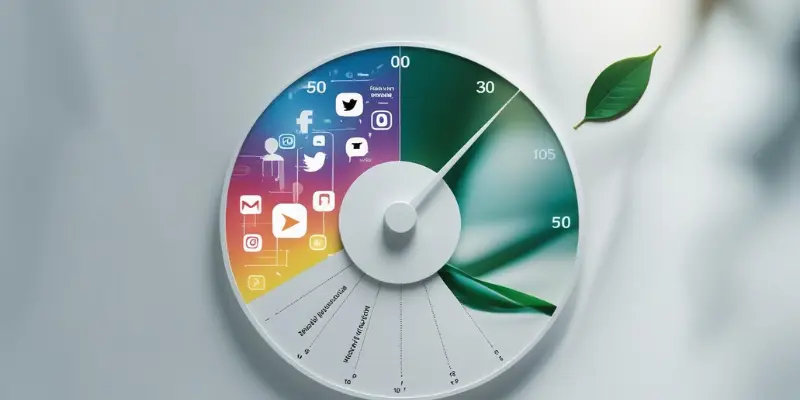
Essential Pre-Detox Preparation Steps
Success in your digital detox starts long before you actually disconnect from your devices. Preparing in advance can make the process smoother and ensure that you stick to your goals. Here’s a step-by-step guide to help you lay the groundwork for your 7-day journey:
- Step 1: Set Clear, Personal Goals
Begin by identifying specific benefits you want to achieve during your detox. What are you hoping to improve in your life during this week? Some examples of personal goals might include:- “Read a book I’ve been meaning to finish.”
- “Spend more quality time with family and friends.”
- “Sleep a full 8 hours each night without the distractions of my phone.”
Setting clear, achievable goals helps you stay focused and provides a tangible reward for completing your detox.
- Step 2: Communicate Your Plan
Let the important people in your life know about your digital detox. This could include informing your family, friends, or colleagues. By sharing your intentions, you can manage expectations and avoid misunderstandings—especially if you’re reducing screen time or stepping away from digital communication. You can say things like:- “I’ll be checking emails only twice a day during my detox.”
- “I won’t be on social media this week, so please text me if you need to reach me urgently.”
- Step 3: Identify Your Digital Triggers
Understanding your digital triggers is crucial to the detox process. What are the habits or circumstances that make you reach for your phone or turn on the TV? Use tools like iOS Screen Time, Android Digital Wellbeing, or apps like Forest and Freedom to track your usage patterns. By identifying these triggers, you can be more mindful of when and why you reach for your devices, and begin to address those moments with intention. - Step 4: Prepare Offline Alternatives
One of the most common struggles during a digital detox is dealing with boredom. To help avoid the temptation of reaching for your device, create a list of offline alternatives. These could be activities that you enjoy or have always wanted to try. Some ideas include:- Reading a book or listening to an audiobook.
- Going for nature walks or doing yoga.
- Practicing a craft, like knitting, painting, or journaling.
- Playing board games with friends or family.
These activities not only keep you busy but also encourage mindful engagement without screens.
- Step 5: Tech Management Logistics
It’s essential to plan how you’ll handle work-related tech usage and emergency situations during your detox. If you need to access work emails or take urgent calls, make sure you’ve set clear boundaries about when and how you’ll engage with tech. For example:- Work Calls: “I’ll take calls from work between 10 AM and 12 PM, but not after that.”
- Emergency Contact: Share an emergency number for essential calls and let others know when you’re likely to check your phone.
- Step 6: Digital Declutter
Before starting your detox, spend a little time decluttering your digital space. Unfollow accounts on social media that drain your energy, unsubscribe from unnecessary emails, and delete apps you rarely use. A more minimalist phone setup—fewer apps, notifications, and digital distractions—will help you stay focused on your detox goals. Decluttering isn’t just about clearing your phone; it’s about clearing your mental space for the detox journey. This decluttering also allows you to better appreciate the simplicity of life outside of digital overload.
“Digital Detox Pre-Flight Checklist”
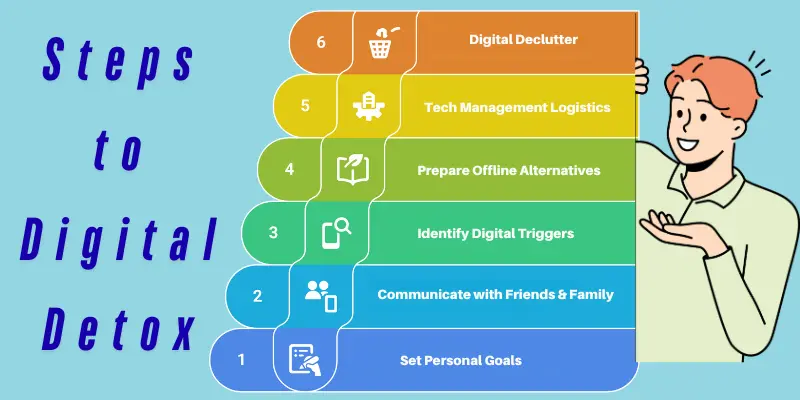
Your 7-Day Digital Detox Journey: A Day-by-Day Blueprint for Transformation
This 7-day detox journey is where the real transformation happens. It’s not just about cutting down on screen time; it’s about creating meaningful change in your relationship with technology. Each day is structured to help you take actionable steps, face common challenges, and make lasting changes that go beyond the detox. Let’s dive in!
Day 1: The Gentle Disconnect & Setting Physical Boundaries
- Theme: Awareness, Notifications, Tech-Free Zones
- Actions:
- Begin by turning off all non-essential notifications—this includes social media, emails, news alerts, and app reminders.
- Designate certain areas in your home as tech-free zones. For example, keep your bedroom and dining area free of devices. This will help you set boundaries around where technology can intrude.
- Place your phone out of reach, such as in another room or in a drawer, to avoid the temptation of constant checking.
- Challenges:
- You may feel an initial urge to check your phone, especially if it’s become a habitual reflex.
- You might feel a sense of being “naked” or disconnected without the immediate access to your device.
- Tips:
- When you feel the urge to check your phone, replace the habit with a more mindful activity: stretching, deep breathing, or simply observing your surroundings. This helps you reconnect with the present moment and break the cycle of automatic tech use.
Day 2: Mindful Consumption & Digital Spring Cleaning
- Theme: Curating Your Digital Input
- Actions:
- Declutter your digital life: Delete unused or unnecessary apps, unfollow social media accounts that leave you feeling drained or negative, and reorganize your home screen for minimalism.
- Switch your phone to grayscale mode for the day, which makes the screen less visually stimulating and reduces the temptation to spend excessive time scrolling.
- Challenges:
- You might experience FOMO (fear of missing out) or a sense of disconnection from the latest updates or news.
- Tips:
- Focus your energy on physical decluttering. This will help shift your focus away from digital space and allow you to engage in activities that bring tangible satisfaction.
- Instead of scrolling, listen to an insightful podcast, or dive into a physical book that encourages growth and mindfulness.
Day 3: Reclaiming Your Time: Intentional Engagement
- Theme: Shifting from Passive Scrolling to Active, Purposeful Tech Use (or Complete Abstinence)
- Actions:
- Set strict time limits for necessary online tasks. Schedule specific “check-in” times throughout the day to limit how often you check emails, messages, or social media.
- If you’re engaging with technology, aim to do so purposefully. Avoid multitasking and let your online tasks be as intentional as possible.
- Challenges:
- Old habits may kick in, and you may find yourself distracted or unable to concentrate on offline activities.
- Finding time for offline tasks can feel difficult as digital habits are ingrained.
- Tips:
- Engage in more face-to-face conversations to deepen your connections and strengthen social bonds.
- Dedicate time to an offline activity you’ve planned, like going for a walk, painting, or cooking a meal. Creating a routine helps rewire your tech habits.
Day 4: Embracing Boredom & Rediscovering Offline Joy
- Theme: Allowing Space for Thoughts, Creativity, and Non-Digital Activities
- Actions:
- Deliberately seek out offline hobbies: Whether it’s writing, cooking, or crafting, today is about rekindling your passions that don’t require a screen.
- Spend time in nature—whether it’s a walk in the park, hiking, or just sitting outside. Nature has a proven calming effect on the mind and body.
- Challenges:
- You may feel restless or find yourself wondering “what now?” as you experience the lack of screen-driven stimulation.
- The temptation to fill silence or boredom with screens can be strong, especially if digital habits have been your go-to coping mechanism for relaxation.
- Tips:
- Keep a journal to document your thoughts, reflections, and any discomfort you’re feeling throughout the day.
- Seek out new experiences. Try something you’ve never done before or take up a hobby you’ve neglected, like gardening, reading, or knitting. Experimenting will help replace the void left by screens.
Day 5: Deep Focus & Enhanced Productivity
- Theme: Applying Digital Boundaries to Work and Productive Tasks
- Actions:
- Implement dedicated “focus blocks” for work tasks. You can try the Pomodoro Technique (25-minute intervals of focused work, followed by a 5-minute break), but do it without digital timers. Use a physical timer instead to limit the urge to check your phone.
- Use website/app blockers during work hours to prevent distractions and schedule time to check emails/messages.
- Challenges:
- You might feel pressure to be constantly available or productive, especially if your work requires frequent communication.
- You may notice an initial drop in productivity or feel frustrated with the slow pace of progress.
- Tips:
- Instead of multitasking, focus on single-tasking for a more efficient and satisfying work experience.
- Take regular physical breaks, whether it’s standing up, stretching, or taking a walk. This will refresh both your mind and body, helping you stay focused for longer periods.
Day 6: Reflection, Recharge & Reconnection
- Theme: Internal Processing and Strengthening Real-World Bonds
- Actions:
- Journal about your detox insights: What have you learned so far? What are the most significant changes in your mental, emotional, and physical well-being?
- Engage in meaningful conversations with loved ones. Make today about reconnecting on a deeper level by having a conversation without the distractions of your phone.
- Enjoy a tech-free meal together, focusing on conversation, food, and shared moments.
- Practice meditation or mindfulness to help process your feelings and ground yourself in the present moment.
- Challenges:
- You may face uncomfortable emotions as you reflect on your relationship with technology or the changes you’ve made.
- Real-world interactions may feel awkward at first, especially if you’re used to having digital distractions in social settings.
- Tips:
- Lean into the stillness. Instead of rushing to fill silences with conversation or distractions, enjoy the peace of being present.
- Practice active listening during your interactions, and make a conscious effort to express gratitude for the people and experiences that matter most.
Day 7: Integration & Designing Your Sustainable Digital Life
- Theme: Consolidating Learnings and Planning for the Future
- Actions:
- Review the past 6 days: What worked? What was challenging? What did you learn about your relationship with technology?
- Identify 3-5 non-negotiable new tech habits to carry forward into your daily life. These could be things like limiting screen time after 8 PM or ensuring you don’t check social media first thing in the morning.
- Create a personalized “Digital Wellness Plan” for yourself. This plan should include clear boundaries for tech use, strategies for reducing digital overwhelm, and commitments to maintaining a healthy balance.
- Challenges:
- You may feel the urge to revert to old habits as you reintroduce devices into your routine.
- The overwhelm of returning to your devices after a week of detox can feel daunting, especially when you have a backlog of emails or notifications.
- Tips:
- Reintroduce tech slowly and intentionally. Prioritize quality interactions over quantity, and gradually ease back into your devices with a mindful approach.
- Remember that progress is the goal, not perfection. Your plan is about long-term wellness, not just a quick fix.
With this 7-day blueprint, you now have a structured, actionable plan to reclaim control over your digital habits, enhance your well-being, and design a healthier relationship with technology. It’s not about perfection—it’s about creating lasting, mindful changes.
Troubleshooting Your Digital Detox: Common Hurdles & Smart Solutions
A digital detox isn’t always easy. Along the way, you’ll likely encounter challenges, feelings of discomfort, and even setbacks. But don’t worry—this is all part of the process. The goal isn’t to achieve perfection, but to embrace progress and to tackle obstacles with smart strategies. Let’s explore the most common hurdles you may face during your detox and how to overcome them.
Overcoming FOMO (Fear of Missing Out)
One of the most common challenges during a digital detox is the nagging feeling of FOMO—the fear of missing out on news, updates, or social events. In today’s digital age, social media has made it feel like we’re constantly in the loop, and stepping away can trigger feelings of isolation or worry.
- Strategies for Reframing:
Rather than focusing on what you’re missing, try shifting your mindset toward the Joy of Missing Out (JOMO). Embrace the freedom that comes with stepping away from the noise. Reflect on how much more present and engaged you’ll feel in your offline life. Think of all the activities and people you’ll have more time for when you’re not distracted by screens. Remind yourself that the world will still be there when you return. Disconnecting allows you to reconnect with yourself and those around you in a way that’s more fulfilling and meaningful. - PAA Integration:
How do I deal with FOMO during a digital detox?- Understand that FOMO is normal, but it’s temporary. Use your detox as an opportunity to reclaim your time, allowing you to live more fully in the moment.
- Engage in activities that provide personal fulfillment, like reading, walking, or spending time with loved ones, instead of scrolling through social media. Over time, you’ll realize that being truly present is far more enriching than constantly checking your phone.
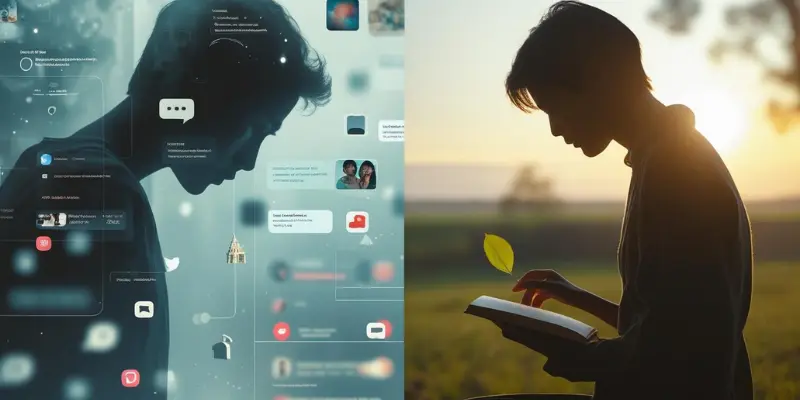
Dealing with “Digital Withdrawal” Symptoms
Going without digital devices may stir up feelings of anxiety, irritability, and restlessness. You might even experience phantom vibrations—the sensation that your phone is vibrating when it’s not. These symptoms are a natural part of the process, as your brain adjusts to the absence of constant digital stimulation.
- Coping Mechanisms:
- Deep Breathing: Engage in deep breathing exercises to calm your mind and body. Breathing deeply for a few minutes can help reduce stress and restore emotional balance.
- Physical Activity: Exercise is a great way to redirect restless energy. Whether it’s a quick walk, stretching, or yoga, physical activity can relieve anxiety and release tension.
- Mindfulness: Practice mindfulness or meditation to reconnect with your thoughts and feelings. A few minutes of mindfulness can help you focus on the present and alleviate withdrawal symptoms.
Navigating Work & Social Obligations
A digital detox can present some challenges when it comes to work and social obligations. If you’re used to constant connectivity for work, or if you rely on digital tools for staying in touch with friends and family, setting clear expectations is crucial.
- Setting Clear Expectations with Bosses/Colleagues:
Let your colleagues or boss know about your detox and set boundaries for work-related communication. For example, you can say, “I’ll be checking emails twice a day between 10 AM and 12 PM, but I’m otherwise unavailable.” This will help manage expectations and allow you to be more present while still staying on top of essential tasks. - Managing Group Chats and Essential Communications:
If you’re part of group chats or communication threads, let people know that you may not be immediately responsive. A quick message like, “I’m doing a digital detox and will check my messages later” will allow you to set boundaries without feeling pressured to respond instantly. You can also schedule offline time to focus on the detox and have periods during the day when you intentionally unplug from group chats or notifications.
What if You Slip Up? Getting Back on Track
Don’t worry if you slip up during your digital detox. It’s completely normal to find yourself reaching for your phone or checking an email unexpectedly. The key is to stay compassionate with yourself and get back on track quickly.
- Emphasize Progress, Not Perfection:
If you fall back into old habits, remind yourself that a digital detox is a journey. It’s not about being perfect—it’s about progress. Don’t let one slip-up derail your entire detox.- Forgive yourself: Acknowledge the slip-up, learn from it, and recommit to your goals. Every small step toward reducing screen time counts, and you’re still making progress.
- Learn from It and Restart:
After a slip-up, think about what led to the distraction. Was it a specific trigger or environment? Adjust your strategy to avoid the same situation in the future. If necessary, start fresh with a clearer commitment to your detox plan.
When to Seek Professional Help
For some individuals, especially those with underlying mental health issues, a digital detox can bring up deeper challenges that require more than just self-help strategies. If you find that you are struggling significantly with addictive tech use or if the detox is causing significant emotional distress, it may be time to seek professional help.
- Recognizing Signs of Problematic Internet Use:
If you experience compulsive behavior, such as constantly checking devices despite your best efforts, or if the detox brings up issues like severe depression or anxiety, it could indicate that digital use is playing a significant role in your mental health.
If you feel overwhelmed, it’s important to talk to a healthcare professional who can offer guidance. - Providing Resources:
- If you feel like your digital usage is negatively affecting your well-being, a therapist or mental health professional specializing in digital wellness can help. They can work with you to address the root causes of tech dependency and guide you toward healthier tech habits.
- Many resources are available for digital addiction, including online therapy, support groups, and mental health apps designed to help individuals manage their relationship with technology.
This section provides the tools and strategies you need to overcome common challenges during your digital detox journey. Remember, a detox is not about being perfect—it’s about progress, self-compassion, and reclaiming control of your digital habits. By facing these hurdles with patience and understanding, you’ll be setting yourself up for long-term success in cultivating a balanced, healthy relationship with technology.
Beyond the 7 Days: Cultivating a Lifelong Practice of Digital Wellness
The 7-day detox is just the beginning. To create lasting change, you need to develop a sustainable digital wellness plan that allows you to maintain the benefits of your detox while living in a technology-driven world. Here’s how you can continue your journey toward a healthier relationship with technology and ensure that your detox experience becomes a lifelong practice of mindfulness and balance.
Your Personalized Digital Wellness Blueprint
Creating a personalized plan that works for you is the key to maintaining the clarity, balance, and mindfulness you gained during your 7-day detox. Here’s how you can build a wellness plan that’s tailored to your needs:
- Establishing Daily Tech-Free Zones:
Incorporate tech-free zones into your daily routine. For example:- Morning Hour: Start your day without jumping straight into emails or social media. Use the first hour of your day for self-care, journaling, or meditation.
- Dinner Time: Make meals an opportunity for connection—either with yourself or loved ones—by making your dining area a tech-free zone. Put your phone away during meals to focus on enjoying the moment.
- Scheduling Regular “Mini-Detoxes”:
Consider scheduling mini-detoxes regularly to ensure that digital wellness becomes a continuous practice. This could include:- Tech-Free Sundays: Designate one day a week where you disconnect from all non-essential technology, allowing you to recharge and enjoy offline activities.
- Weekend Getaways: Plan occasional weekend trips with limited tech usage. Disconnecting from screens in nature or while traveling can significantly boost your well-being and creativity.
- Mindful Social Media and Content Consumption Strategies:
- Mindful consumption means being more intentional about what and how you consume digital content. Curate your feeds to focus on accounts, websites, and content that nourish and inspire you rather than drain or overwhelm you.
- Limit your social media usage by setting time constraints for checking platforms, or even use apps that block social media outside of designated times.
- Prioritizing Real-World Connections and Hobbies:
In a digital world, it’s easy to let virtual relationships take precedence over real-world ones. Prioritize face-to-face interactions and make time for hobbies that don’t involve technology. Whether it’s playing a musical instrument, painting, or exploring nature, engaging in non-digital activities helps restore balance. Make these hobbies a regular part of your routine to ensure you’re continuing to nurture a well-rounded life beyond screens. - Using Tech as a Tool, Not a Master:
Technology is a tool meant to enhance your life, not control it. Going forward, aim to use tech intentionally. Ask yourself, “Is this tool serving my needs or is it using me?”- For example, use apps for productivity, learning, or fitness but avoid those that induce stress, comparison, or aimless scrolling.
- Set clear purpose-driven goals for your technology use to avoid falling back into habits of passive consumption. Always ensure that your tech use serves specific, positive purposes in your life.
Essential Tools & Resources for Ongoing Support
To help you maintain your digital wellness practice and support you beyond the detox, here are some essential tools and resources you can use:
- App Recommendations:
Technology can be a helpful ally in maintaining digital wellness if you use the right tools. Here are some apps that support your ongoing journey:- Forest: An app that encourages you to stay off your phone by growing a virtual tree when you avoid digital distractions. Over time, you build a forest of focus.
- Freedom: This app allows you to block websites and apps that you find distracting. You can set up custom schedules for when you want to be distraction-free.
- Moment: Tracks your screen time and helps you set daily usage limits. It offers tools to help you gradually reduce screen time.
- RescueTime: A productivity tool that tracks how you spend your time on your devices, helping you identify areas where you can improve and reduce unnecessary screen time.
- Physical Tools:
Sometimes, low-tech solutions are the most effective. Consider using these physical tools to further support your digital wellness:- Analog Alarm Clocks: Avoid using your phone as an alarm clock, which often leads to checking messages or emails first thing in the morning. An old-fashioned alarm clock will help you keep your morning routine tech-free.
- Journals: Keep a digital detox journal to reflect on your experiences, track your progress, and set new goals for improving your relationship with technology.
- Physical Books: Make reading physical books a habit rather than relying on e-readers or digital content. This helps reduce screen time while still fostering personal growth.
- Community/Support:
Building a supportive community is key to sustaining your digital wellness practice. Whether online or in-person, surround yourself with like-minded individuals who also value balance in their digital lives.- Join wellness groups or online forums where you can share tips, experiences, and challenges. Many digital wellness communities provide support and motivation, which can help you stay committed to your goals.
- Follow blogs, podcasts, and content creators focused on mindful tech usage, personal growth, and digital detox. These resources will keep you informed, inspired, and motivated to continue your journey.
For additional guidance, consider seeking resources from reputable digital wellness organizations or scientific articles that discuss the long-term effects of screen time and the importance of tech mindfulness. These can deepen your understanding and provide additional strategies for maintaining a healthy digital life.
By creating your personalized digital wellness blueprint and leveraging these tools, you’ll ensure that your digital detox isn’t just a temporary fix but a lasting transformation. Keep practicing mindfulness, set clear boundaries, and continue prioritizing your offline life. The journey to a balanced, healthier relationship with technology doesn’t end after 7 days—it’s a lifelong practice that can enhance your well-being for years to come.
Congratulations on completing your 7-day journey! The next step is to make these benefits last a lifetime. Discover how to build truly: Sustainable Digital Habits: Your Post-Detox Action Plan
Conclusion: Your Empowered Future with Technology
As you reach the end of your 7-day digital detox journey, it’s time to reflect on the transformation you’ve experienced and the profound benefits you’ve gained. You’ve navigated through the challenges, embraced new habits, and made intentional changes that have had a lasting impact on your well-being.
Over the past week, you’ve experienced clearer thinking, reduced stress, improved sleep, and deeper connections with yourself and the people around you. You’ve rediscovered passions, reclaimed your time, and built a healthier relationship with technology. Through this journey, you’ve found the balance between engaging with technology mindfully and taking time for real-world experiences that truly nourish your soul.
Remember, the goal of a digital detox is not about deprivation—it’s about embracing freedom and intentional living. It’s about regaining control over how you interact with technology, rather than being controlled by it. Technology should serve your needs, help you connect, and enhance your life, not overwhelm you or dictate your time. This detox is just the beginning of a lifelong practice of mindful tech use, where you can enjoy the best of both worlds—technology and the richness of the offline experience.
Final Thoughts
Now that you’ve experienced the power of a digital detox, take these lessons forward. Let them inspire you to continue your journey toward digital well-being. Each day offers an opportunity to reset and reconnect, to make mindful decisions about how you use technology in your life. Your digital wellness is within your control—this journey is yours to continue. With consistent effort and awareness, you’ll build a more balanced, fulfilling life where technology enhances, rather than dominates, your experience.
Are you ready to truly transform your relationship with technology? Take the first step toward a healthier, more balanced life—start your 7-day Digital Detox journey today!
What’s the one digital habit you’re most excited to change? Share your thoughts in the comments below and let us know what you’re looking forward to most as you begin your own detox journey!
Looking for more ways to live mindfully and reconnect with yourself? Explore more tips on mindful living and how to maintain a healthy tech-life balance in our other articles! Let’s continue this journey of personal growth and well-being together.
Your digital wellness journey doesn’t end here. With the tools, strategies, and mindset you’ve developed, you’re now equipped to lead a more intentional and fulfilling life. Embrace this empowered future with technology—one that supports your goals, enhances your experiences, and allows you to live life fully.
Your Guide to a Successful Digital Detox: All Your Questions, Addressed!
A digital detox is a conscious break from technology to reduce digital overwhelm, improve mental clarity, and restore balance in your life. It’s not about total abstinence but about reconnecting with the world around you and enhancing your well-being.
A typical digital detox lasts for 7 days, but you can extend or shorten it depending on your goals. Even short breaks, like a weekend detox, can provide significant benefits.
Yes! Many people report improved sleep quality, reduced stress levels, better focus, and enhanced emotional well-being after just a few days of disconnecting from screens.
If you need to stay connected for work, opt for a partial digital detox. Limit your screen time to work-only tasks or set strict boundaries for checking emails and messages at designated times.
You can use your phone for essential tasks, like emergency calls or work-related communication. However, try to limit time spent on social media and entertainment apps. Designating tech-free zones (e.g., the bedroom, dining area) can also help create boundaries.
Focus on JOMO (Joy of Missing Out). Embrace the benefits of disconnecting, such as gaining mental clarity, improving creativity, and strengthening relationships with those around you.
Make a “Boredom Buster” list of offline activities you enjoy or want to try, like reading, hiking, cooking, journaling, or spending time with family. Rediscover hobbies and enjoy the simple pleasures of life without screens.
Yes, it’s common to experience digital withdrawal symptoms like anxiety or irritability. These feelings usually subside after a few days as your body and mind adjust to the reduced screen time.
Initially, you may feel less productive due to the habit shift. However, over time, reducing digital distractions can actually improve your productivity, focus, and creativity. You’ll be more efficient and able to engage in deeper, meaningful work.
To maintain the positive effects of your detox, integrate daily tech-free zones, mindful social media use, and regular mini-detoxes. Make technology serve you, not control you, by setting intentional boundaries.

- Be Respectful
- Stay Relevant
- Stay Positive
- True Feedback
- Encourage Discussion
- Avoid Spamming
- No Fake News
- Don't Copy-Paste
- No Personal Attacks

- Be Respectful
- Stay Relevant
- Stay Positive
- True Feedback
- Encourage Discussion
- Avoid Spamming
- No Fake News
- Don't Copy-Paste
- No Personal Attacks


